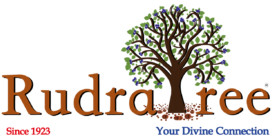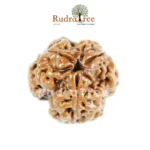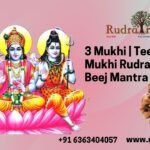3 Mukhi Rudraksha
₹700.00 – ₹19,200.00
Benefits of 3 Mukhi Rudraksha:
3 Mukhi Rudraksha has been said to improve memory and also the strength of seeing. People who have difficulty seeing are advised to wear this pendant.-
- The person wearing 3 Mukhi Rudraksha outfits has a good self-esteem and can take on any situation. By having a positive outlook, the person can achieve great happiness in the world.
-
- 3 Mukhi Rudraksha is able to reduce the negative effects of Mars.
-
- Astrologers recommend wearing a 3 Mukhi Rudraksha Malas in silk red thread to children suffering from one or other illness.
-
- 3 Mukhi Rudraksha is a potent gemstone that assists in burning the past sins, bad memories, and debts that the user has accumulated.
-
- This is a great option for those suffering with depression or who are in a state of stress. 3 Mukhi Rudraksha is a great remedy for the inferiority complex, as well as anxiety disorders. The bead is able to promote positivity.
-
- The 3 Mukhi Rudraksha has proven the health benefits of this herb to a lot of individuals. It’s extremely effective in helping combat skin conditions. The beads also boost blood flow throughout the body of wearer.
Significance of 3 Mukhi Rudraksha:
- The god Agni plays a significant role in Hindu temple architecture, and is typically located at the southeast end of a Hindu temple. Agni is the focal point of many Hindu rituals, including those devoted to prayer for birth and death.
- In ancient Hindu texts, Agni is depicted as the flame in three different ways: as lightning, as the sun, and as an intermediary between humans and the Gods. Agni is one of four essential gods who are commonly used by the gods of Vedic texts; the others are Indra, Vayu, and Soma.
- According to Hinduism, Agni is present at all times of life, including weddings, birthdays, births, prayers, and funerals. His influence extends to the creation of the life force itself, and it is believed that he plays a role in many biological processes within the human body.
As we stand on the cusp of completing a century in service, our ISO 9001:2015 certification stands testament to our unyielding commitment to quality and authenticity. We promise you not just a product, but a legacy, handpicked directly from the nurturing grounds of Nepal and Indonesia, bearing the essence of ancient Vedic rituals with energizing procedures.
At RudraTree, we offer more than a Rudraksha; we offer an experience enriched with authenticity and spiritual awakening, making divine connections possible and affordable. Join us in this sacred journey, as we continue to bring the unparalleled power and purity of Rudraksha beads into homes globally, fostering spiritual connections that stand the test of time. Let the RudraTree legacy be a part of your spiritual journey, as we vow to uphold the values of quality, affordability, and spiritual authenticity for generations to come.
What is 3-Mukhi Rudraksha?
- Named after the three parallel lines that can be seen on the outside of each Rudraksha bead, “Three Mukhi Rudraksha” refers to a specific kind of Rudraksha.
- Rudraksha, with its trident-shaped projections, represents the Hindu trinity of Brahma, Vishnu, and Mahesh (Shiva). The Rudraksha is also symbolic of Agni Dev’ (Fire God), another Hindu deity.
- In the same way that fire may consume everything and leave nothing but ash, the wearer of this item can rid themselves of all impurities and regain a sense of cleanliness.
- The energies of a three Mukhi Rudraksha may help you concentrate and gain knowledge, making it an excellent tool for individuals experiencing worry, low self-esteem, or feelings of guilt and melancholy. Another potential benefit is improved financial knowledge.
3-Mukhi Rudraksha, according to the Scriptures:
- The name is a reference to the God of Fire, whose name in Sanskrit is Agni. It is widely believed that Agni, one of the most powerful deities in the Vedic pantheon, rules the universe.
- Several hymns in the earliest Vedic text, the Rig Veda, celebrate Agni as a deity of great might with Vayu, the god of the wind, and Surya, the god of the sun.
- In Hinduism, Agni is worshipped as a guardian deity and is often located in the southeast corner of temples. According to the cosmological tradition of Indian religions, the five inert impermanent components (Pancha Mahabhuta) are Fire (Agni), Space (Akaash), Water (Jal), Air (Vayu), and Earth (Prithvi), and together they constitute an analytically perceived material reality (Prakriti).
- According to the Vedas, Agni is the God of Fire and Lord Indra is the God of Kings. In Vedic times, Agni was considered second only to Indra in importance.
- It is believed that Agni, together with Surya and Indra, form the trinity of Vedic deities. Agni is revered as a guardian deity because of the faith that he would keep harm out of one’s home.
- Many other kinds of fire, such as the sun and comets, lightning, altar fire, cooking fire, funeral pyres, and the digestive fire that burns inside each of us, are all related with Agni. It is widely held that Agni connects the earth and the skies and plays a crucial part in the yajna rite of sacrifice.
- The people who offer fire as a sacrifice to the gods saw him as a conduit between them and the gods in heaven. Vedic period animal sacrifices relied heavily on Agni. A modern Hindu wedding would be incomplete without a fire altar devoted to Agni.
- The Vedas state that Agni, Vayu, and Soma represent fire, water, and air, respectively. In the Vedic era, they played a significant role as gods. Many animals were slaughtered during this time. Since Agni represented all other gods in Hinduism, calling upon him as the Fire God was obligatory.
- Yupa, an octagonal stake made of wood, was often used to fasten sacrificial animals to the ground. The “Ashwamedha” ritual’s sacrifices were often made to either Prajapati or Soma.
- In the Agni Purana, one of the 18 Puranas, it is said that without Agni as mediator, one cannot approach any deity. No divine entity can materialise outside of Agni.
- Some ancient scriptures portray Agni as Agniras’s offspring; they believe he developed fire’s many uses. His Kravyad form is the most devastating one he can become.
- There were three births for Agni. His first birth occurred high in the sky, when Agni made his appearance in the shape of a bolt of lightning. His second incarnation was as a human being known as Jataveda, and his third was in the ocean.
- It is widely held that Jataveda is the term used to describe how devotees incorporate yajna rituals into their daily lives. They think it shows respect and sophistication.
- Kravyad, on the other hand, is the manifestation used during the Pitru-yagna to burn the bodies of animals or people that have been sacrificed. The energy of the sun, or Agni, may be captured and used. sun.
- Many people think that Agni carries their prayers and offerings up to the gods for them. As long as Agni is content, the gods will grant the wishes of their devotees and pay attention to their petitions.
- Agni is invoked more often than any other deity in the Rig Veda, even more so than Soma. The Vayu Purana claims that Agni has three incarnations, each represented by one of his offspring.
- Pravaka represents an electric flame, Pavamana represents sparks produced by friction, and Suchi represents the sun’s fire. They are supposed to be cursed by Sage Vashishta and to reincarnate endlessly in different parts of the cosmos.
- Agni was associated with many aspects of Brahman, the monotheistic God who governed the universe, throughout the Upanishads. The divine might ascribed to him was widely acknowledged. deity, including omniscience and omnipresence.
- The idea of sacrifice shifted from being something that had to be done on the outside to being something that had to happen within in the minds of humans.
- Over time, the numerous facets of flame’s heat (or tapas) have come to dominate the notion of fire. In lieu of the ostentatious public fire rituals described in the Rig Veda and the Brahmanas, the austere practises of the inner fire ritual were developed. In ancient times, people believed that their brains, arms, and genitalia all contained fire in the form of their intelligence, speech, and sovereignty, respectively.
An Account of Agni Dev
- Agni was captivated by the women of the Saptarishis who attended the Yagna with their husbands. He was certain that his partner would never betray them. Agni went for a walk in the woods to get rid of his horrible attitude.
- The daughter of Daksha Swaha had long held romantic feelings for Agni, God of Fire. By pretending to be Angiras’s wife, she was able to take advantage of the situation. She did this in the hopes of drawing Agni to her. Then she reinvented herself as the six wives of the Saptarishi.
- After she attempted to pass herself off as one of Vasishtha’s wives, Arundhati, Agni recognised her true identity. The cause for this is Arundhati’s undying devotion to Vashishta.
- Agni told Swaha that he was allowed to have sexual relations with the women of the Saptarishis without breaching the sanctity of marriage since he was a god.
- He eventually proposed to her and they tied the knot. Swaha welcomed the offer enthusiastically. Agni vowed to never take an offering again following the first time the name Swaha was spoken during the couple’s wedding. The priest must first pronounce Swaha before adding anything to the fire.
- According to another legend, Agni made fun of Sage Bhrigu. He wished for him to be a bottomless pit and a voracious eater.
- The curse that made everything Agni touched unclean was eventually removed by a compassionate Lord Brahma.
3-Mukhi Rudraksha & Fire God Agni
- Agni Dev’s devotion to Lord Shiva and his consort, the goddess Parvati, was unwavering. Agni Dev, one of the five elements that make up the Panch Mahabhutas, grinds evil to dust.
- In the beginning, Shiva gave Agni his flaming seed, knowing full well that the child will one day slay Tarakasur. Agni first brings this seed to Ganga, where it will grow among the Sharavana Reeds.
- The seed grows into Kartikeya, Shiva’s son. There is no way to underestimate the importance of Agni’s tale in the Rig-Veda. He represents everything in the universe, from the ground to the heavens and beyond.
- Worshipping Agni Dev with the three Mukhi Rudraksha and then reciting the Gayatri mantra is said to bring him joy. When you achieve this level of mastery, you will be able to access a more enlightened way of thinking and living.
- Agni represents all things alive; he is free and without ego. Lord Shiva bestowed self-assurance and a relaxed way of life onto the bearer of the 3 Mukhi Rudraksha by way of the three-headed Agni.
- The oldest songs express a notion that Agni resides in a pair of pressed-together wooden planks in order to create fire.
- It has been noted that Agni’s quick development as a kid was remarkable. The fact that he was born to a poor single mother is to blame. Instead, he uses a teaspoon of clarified butter as his meal.
Festivals and 3-Mukhi Rudraksha:
When worn on special events, the Three Mukhi Rudraksha is said to magnify the effects of the occasion. For instance, it is considered desirable to wear all 108 Rudrakshas on the holy days of Shravan Maas and Mahashivratri.
Dussehra
Wearing a Three Mukhi Rudraksha on Dussehra, the day when good triumphs over evil, is said to bring financial success, self-assurance, and bravery. The bead, which represents Lord Agni and is said to be a fountain of fire, would help its user triumph over adversity and vanquish their enemies.
Celebration of Lord Hanuman with Lights
The birthday of Lord Hanuman, a powerful and faithful figure, is celebrated as Hanuman Jayanti. The bead, said to symbolise Lord Shiva in his three incarnations, ushers in a period of peace, prosperity, and harmony.
Lord Agni, the presiding deity, is often shown on a bull in art. Horses or goats pull his chariot.
Origin: Nepal. As per Rudraksha Upanishad, Nepali Rudraksha are considered more significant and beneficial than Indonesian beads. They are bigger in size & heavier in weight similar to the size of an Amla.
Ruling Deity: Lord Agni Dev
Ruling Planet: Planet Mars
Bheej Mantras: “Om Kleem Namah,” “Om Veem,” and “Om Namah Shivay”
Related Chakras: Manipur Chakra
Size of Beads: 15mm-20mm
How do you identify the original 3-Mukhi Rudraksha:
- Quality Rudraksha contains mukhis that have an obvious outline, which flow through their entirety. The majority of the time, single-mukhi Rudraksha beads with more than 12 lines can be made by traders with purposes of earning an impressive profit. The upper mukhi is created by the carving of the lower mukhi.
- As per Maha Shiv Puran, most way to know the authenticity of a 3-Mukhi is authentic is to break the beads along its center and count the number chambers.
- The lines in the chambers must be equal to the number of Mukhis located on the outside part of the bead. In X-rays, you can see the lines that are inside.
- The authentic Rudraksha is an exquisite body with clearly defined grooves or Mukhis. Artificially or fake Rudraksha may look identical to the original, but the features (Mukhis) don’t match exactly with genuine beads. Beads that weren’t created in full or consumed by insects have a greater probability of falling.
- The Rudraksha beads will spin in the event that you place it between two coins of copper, in accordance with the Copper Coin Test. A lot of people do this and do not realize the truth or why it is since they think it’s due to Rudraksha beads’ magnetic and physical characteristics.
- When you place a circular object (like the Rudraksha beads) within two smooth metal coins, it can spin as a result of the force of gravity acting on the pivoting area of the Rudraksha beads. It has nothing to do to the authenticity that is the Rudraksha.
- In the event that the Rudraksha is securely held between two coins or if its protrusions are smooth and do not block the motion, it could there is no spin at all. If customers notice that their Rudraksha beads don’t seem to spin easily when held in their hands and they are often tempted to jump into the conclusion that the bead is not real.
Additional information
| Rules | Rules to follow to maintain your 3-Mukhi Rudraksha: |
|---|---|
| Details | Origin: Nepal. As per Rudraksha Upanishad, Nepali Rudraksha are considered more significant and beneficial than Indonesian beads. They are bigger in size & heavier in weight similar to the size of an Amla. |
| Select Type | Regular, Large, Collector, Super Collector |
| certificate | Not Required, Microscopic certification |
| Pooja/Energization | No Pooja, Archana, Rudra Abhisheka |
| Design | Loose bead, Silver Cap, Gold cap, Thread |
Question: |
How to wear 3-Mukhi Rudraksha? |
design |
Answer: |
First, you should be cleaned up and dressed well, then you should sit facing the west side of the Pooja Ghar or the east wall of your house, and you should recite your mantra “Om Kleem Namah” over and over again. Finally, you should wear the 3-Mukhi Rudraksha applied with sandalwood paste & Kumkum. |
|
Question: |
Who should wear the 3-Mukhi Rudraksha? |
design |
Answer: |
Some religious texts claim that the wearer of a 3 Mukhi Rudraksha will experience the same good fortune as those who take part in Havans (a sacred ceremony in which gifts are offered to flames). When the Rudraksha is burned, the sins of the bearer’s past lives are forgiven, and he or she is released from the ill effects of their Karma. |
|
Question: |
How to identify your original 3-Mukhi Rudraksha? |
design |
Answer: |
Quality Rudraksha contains mukhis that have an obvious outline, which flow through their entirety. The majority of the time, single-mukhi Rudraksha beads with more than 12 lines can be made by traders with purposes of earning an impressive profit. The upper mukhi is created by the carving of the lower mukhi. As per Maha Shiv Puran, most way to know the authenticity of a 3-Mukhi is authentic is to break the beads along its center and count the number chambers. The lines in the chambers must be equal to the number of Mukhis located on the outside part of the bead. In X-rays, you can see the lines that are inside. The authentic Rudraksha is an exquisite body with clearly defined grooves or Mukhis. Artificially or fake Rudraksha may look identical to the original, but the features (Mukhis) don’t match exactly with genuine beads. Beads that weren’t created in full or consumed by insects have a greater probability of falling. The Rudraksha beads will spin in the event that you place it between two coins of copper, in accordance with the Copper Coin Test. A lot of people do this and do not realize the truth or why it is since they think it’s due to Rudraksha beads’ magnetic and physical characteristics. When you place a circular object (like the Rudraksha beads) within two smooth metal coins, it can spin as a result of the force of gravity acting on the pivoting area of the Rudraksha beads. It has nothing to do to the authenticity that is the Rudraksha. In the event that the Rudraksha is securely held between two coins or if its protrusions are smooth and do not block the motion, it could there is no spin at all. If customers notice that their Rudraksha beads don’t seem to spin easily when held in their hands and they are often tempted to jump into the conclusion that the bead is not real. |
|
2
Why Choose RudraTree
We have fostered a rich tradition that spans nearly a century. Our journey began with a divine task — to find the perfect Rudraksha mala for Tirupati Lord Balaji, a mission that saw Pillai traversing the diverse landscapes of Nepal, Sri Lanka, and Indonesia.
ExcellentBased on 2654 reviews
 Supriya Reddy2024-06-25Best places to buy rudraksha and gem stones.Guruji prescribes rudrakshas, gemstones based on our horoscope.Staff is so polite and friendly.Thank you
Supriya Reddy2024-06-25Best places to buy rudraksha and gem stones.Guruji prescribes rudrakshas, gemstones based on our horoscope.Staff is so polite and friendly.Thank you C Naga Dinesh2024-06-24Very nice place to buy rudrakshas.Quality of rudrakshasare too good.
C Naga Dinesh2024-06-24Very nice place to buy rudrakshas.Quality of rudrakshasare too good. gorantla nagarjun2024-06-21A year ago, I was in search of a good gemstone shop and found RudraTree on Google. I visited the store and was impressed by their huge variety of gemstones. They even check your horoscope to see if the stones are suitable for you. I decided to wait a full year before writing this review to ensure I could fully experience the effects of my purchase. Based on my horoscope, I bought a yellow sapphire, coral, and pearl. Since then, I have seen many evident changes in my life. These gemstones have made a significant impact, and my spiritual journey with RudraTree began from that moment. The quality of the stones is excellent, and the staff is incredibly knowledgeable and helpful. Their customer service goes above and beyond, maintaining contact and support even a year after the purchase. I’m very happy with my experience at RudraTree and highly recommend them to anyone seeking quality gemstones and personalized service.
gorantla nagarjun2024-06-21A year ago, I was in search of a good gemstone shop and found RudraTree on Google. I visited the store and was impressed by their huge variety of gemstones. They even check your horoscope to see if the stones are suitable for you. I decided to wait a full year before writing this review to ensure I could fully experience the effects of my purchase. Based on my horoscope, I bought a yellow sapphire, coral, and pearl. Since then, I have seen many evident changes in my life. These gemstones have made a significant impact, and my spiritual journey with RudraTree began from that moment. The quality of the stones is excellent, and the staff is incredibly knowledgeable and helpful. Their customer service goes above and beyond, maintaining contact and support even a year after the purchase. I’m very happy with my experience at RudraTree and highly recommend them to anyone seeking quality gemstones and personalized service. Pramod Bhayrava2024-06-16Me and my wife took consultation with guruji. The problem identification and advice from guruji is remarkable and very much promising. They also suggest suitable rudraksha and gem stone according to our chart. They also sell original rudraksha (Mostly from Nepal and Indonesia) which are tested/ certified. Trusted point. My suggestion is to once come and visit, this will change your fortune by knowing it. Thank you.
Pramod Bhayrava2024-06-16Me and my wife took consultation with guruji. The problem identification and advice from guruji is remarkable and very much promising. They also suggest suitable rudraksha and gem stone according to our chart. They also sell original rudraksha (Mostly from Nepal and Indonesia) which are tested/ certified. Trusted point. My suggestion is to once come and visit, this will change your fortune by knowing it. Thank you. ujwala N2024-06-16We took consultation for myself and my husband and we felt it was fortunate we met him in our right time and suggested us simple remedies and stones and explained us how it will help us wrt our horoscopes. We got good quality stones and rudhrakshi.
ujwala N2024-06-16We took consultation for myself and my husband and we felt it was fortunate we met him in our right time and suggested us simple remedies and stones and explained us how it will help us wrt our horoscopes. We got good quality stones and rudhrakshi. Hariprasad B. C.2024-06-08Nice environmental, good suggestion lot of items, etc I'm satisfied with emerald ring
Hariprasad B. C.2024-06-08Nice environmental, good suggestion lot of items, etc I'm satisfied with emerald ring saurabh singh2024-06-06I came here to buy the rudraska and got thorough and detailed recommendation from Guruji. He is very kind and knowledgeable person. I would recommend anyone who is looking to buy rudraksha as well as gemstones from RudraTree.
saurabh singh2024-06-06I came here to buy the rudraska and got thorough and detailed recommendation from Guruji. He is very kind and knowledgeable person. I would recommend anyone who is looking to buy rudraksha as well as gemstones from RudraTree.
We Help You In Buying Process
Our 17 Expert Committees continuously analyze, review & approve the originality & authenticity of Rudraksha Beads and Gemstones.
Share Your Details in form
Please share your details in the product page form i.e date & place of birth and Phone Number
Our Expert Recommendation
Our Expert Committee will analyse your horoscope and will recommend you a unique Rudraksha or Gemstone.
Make the Payment
Make the payment by various online methods UPI/Credit card/Debit card/ etc
Pranaprathista / Energising Process
Rudraksha and Gemstones are energised at 1200 year old ancient temples. And your divine connection with Rudratree begins. Rudratree continuously mentor you in your spiritual journey.
Delivery of your product
Your personalized Rudraksha and Gemstones are delivered to you.











Reviews
There are no reviews yet.